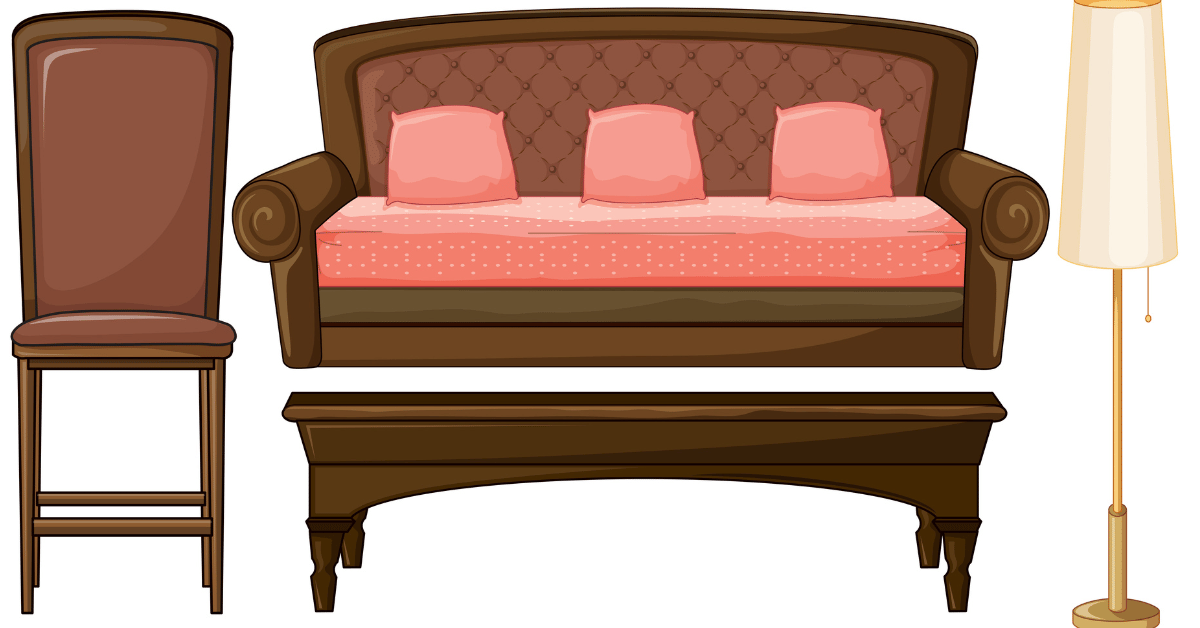The Complete Guide to Nest of Tables Furniture: Versatility, Design, and Modern Living Solutions
When it comes to practical yet stylish home furnishings, nest of tables furniture often gets overlooked—yet it shouldn’t. If you’re searching for versatile furniture that saves space, adapts to different situations, and complements a range of interior designs, nest of tables might be your perfect solution. In this guide, you’ll discover what nest of tables are, why they’re becoming a modern living essential, and how they can transform the way you use your space. This article covers their history, materials, design trends, and practical tips for integrating them into various rooms.
What Is a Nest of Tables?
A nest of tables refers to a set of small tables, usually between two and five, that fit neatly underneath each other like a stack. The largest table sits on top, and the others slide underneath in descending size order. The design allows the tables to be stored compactly when not in use but easily separated and moved when needed.
These tables are commonly used in living rooms, but their functionality extends far beyond that. Homeowners now use them in bedrooms, offices, entryways, and even outdoor settings. The nesting concept makes them ideal for modern lifestyles where flexible use of space is often essential.
Why Are Nest of Tables So Popular?
Nest of tables furniture has surged in popularity for several reasons:
Space-saving design
Multi-purpose functionality
Wide variety of styles and materials
Adaptability for different rooms
Ease of storage and mobility
With real estate prices climbing and living spaces shrinking in many parts of the world, furniture that serves multiple purposes is in high demand. Nesting tables solve this problem elegantly. They let you maximize surface area when guests arrive and minimize clutter when you’re alone.
The History of Nest of Tables Furniture
The concept of nesting tables dates back to the late 18th and early 19th centuries, first appearing in England. The original designs were credited to Thomas Sheraton, a famed English furniture designer whose works defined the neoclassical style. His nesting tables were often crafted from mahogany and adorned with delicate inlays.
By the 20th century, nesting tables became a staple in many homes worldwide. They transitioned from ornate, decorative pieces to more functional, minimalist designs. Today, designers experiment with materials such as glass, metal, bamboo, and composite wood, creating a blend of tradition and innovation.
Materials Used in Modern Nest of Tables
Material selection influences the aesthetics, durability, and weight of nesting tables. Here’s a look at the most common materials used today:
Wood
Metal
Glass
Marble
Acrylic
Bamboo
Engineered wood
Each material offers different advantages. For example, solid wood provides a classic, timeless look, while acrylic tables give rooms a modern, airy feel. Metal and glass combinations are popular in contemporary and industrial interiors.
Table of Popular Nest of Tables Materials and Their Characteristics
Material Uses Pros Cons Best For
Wood Living room, bedroom Durable, warm aesthetics Can be heavy, susceptible to scratches Traditional and rustic interiors
Glass Modern spaces, small apartments Light appearance, easy to clean Fragile, fingerprints visible Contemporary minimalist decor
Metal Industrial or modern decor Strong, durable Can feel cold, prone to rust if untreated Loft-style or urban interiors
Acrylic Small apartments, modern decor Lightweight, transparent Can scratch easily, not heat-resistant Minimalist and ultra-modern homes
Marble Luxury spaces Elegant, heat-resistant Very heavy, expensive High-end living rooms
Bamboo Eco-friendly homes Sustainable, lightweight Less durable than hardwood Green and natural interiors
Engineered Wood Budget-friendly spaces Affordable, variety of finishes Less durable than solid wood Modern apartments and rentals
Where to Use Nest of Tables in the Home
While living rooms remain the most common place for nesting tables, they are increasingly being used in creative ways throughout the home.
Living Room
In the living room, nesting tables act as coffee tables, side tables, or serving stations during gatherings. When guests visit, you can spread them out for extra surface area. When you’re alone, stack them back together for a neat look.
Bedroom
In bedrooms, they can serve as nightstands, especially when space is tight. Use the largest table for lamps and the smaller ones for books, glasses, or other essentials.
Home Office
For home offices, nesting tables work well as additional surfaces for files, laptops, or coffee cups. When not in use, slide them away to keep your workspace clear.
Entryway
Place a set near the front door as a catch-all for keys, mail, or bags. The nesting feature lets you expand the surface area when needed but keeps the entrance neat otherwise.
Outdoor Spaces
Some nesting tables are designed specifically for outdoor use, made from weather-resistant materials. These can be used on patios or balconies to hold drinks, snacks, or plants.
Design Styles and Trends
Nest of tables are not just practical—they also contribute to your home’s style. Here are some design trends shaping the current market:
Mid-century modern with clean lines and tapered legs
Scandinavian minimalism using light wood and neutral colors
Industrial designs with metal frames and reclaimed wood
Glamorous looks with mirrored surfaces or marble tops
Rustic farmhouse using distressed finishes
Contemporary geometric shapes and nesting patterns
Many homeowners opt for nesting tables that serve as accent pieces. Choosing bold colors, unusual shapes, or textured surfaces can turn a simple piece of furniture into a conversation starter.
The Benefits of Nest of Tables Furniture
Understanding the benefits of nesting tables helps justify their growing popularity.
Space Efficiency: Ideal for small apartments or homes where space is at a premium
Multi-Functionality: Can act as coffee tables, side tables, nightstands, or display stands
Portability: Lightweight designs are easy to move around the house
Stylish Versatility: Complements various design themes, from vintage to modern
Affordability: Often more cost-effective than buying multiple separate tables
Compact Storage: Tables slide under each other, minimizing clutter
How to Choose the Right Nest of Tables
When selecting a nest of tables, consider these factors:
Size: Measure your available space. Make sure the largest table fits comfortably where you plan to use it.
Material: Choose a material that matches both your decor and lifestyle. For example, glass may not be ideal if you have young children.
Design: Consider how the style integrates with your existing furniture. A minimalist home may benefit from acrylic or metal nesting tables, while a rustic home pairs better with wooden designs.
Durability: If you plan to use the tables frequently, opt for robust materials like solid wood or metal.
Functionality: Think about how you intend to use the tables. Do you need them for decoration, practical use, or both?
How Nest of Tables Improve Daily Living
Nesting tables support dynamic living. For example, if you live in a small urban apartment, you might use the largest table as a coffee station in the morning. Later in the day, pull out a smaller table to hold your laptop while you work from the couch. In the evening, the same tables can hold snacks and drinks when friends come over.
This adaptability is particularly important in today’s hybrid lifestyles, where homes double as workspaces, social hubs, and personal retreats. Furniture needs to keep up with these shifting roles, and nesting tables do exactly that.
Innovations in Nest of Tables Furniture
Modern designs have introduced innovations that extend the functionality of nest of tables even further. Some examples include:
Tables with built-in charging ports for phones and laptops
Tables with hidden storage compartments for remotes or books
Convertible tables that also serve as stools or seats
Eco-friendly models made from recycled materials
Smart tables with Bluetooth speakers and touch controls
These new features transform nesting tables from simple furniture into multifunctional lifestyle tools.
Care and Maintenance
Proper care extends the life of your nesting tables. Here are some general maintenance tips:
Wood: Use furniture polish regularly and clean spills immediately to avoid stains.
Glass: Wipe with glass cleaner to maintain shine and prevent smudges.
Metal: Keep metal surfaces dry to prevent rust. Use a soft cloth for dusting.
Acrylic: Clean with a microfiber cloth to avoid scratches. Never use harsh chemicals.
Marble: Use a coaster to prevent rings from drinks. Seal the marble periodically to maintain its surface.
Nest of Tables vs. Other Small Furniture
How do nest of tables compare to other small furniture options? Let’s explore:
Furniture Type Pros Cons Best Use
Nest of Tables Space-saving, flexible, stylish Limited tabletop size per piece Multi-purpose surface area
Coffee Table Large surface area, decorative centerpiece Not flexible or easy to move Central living room piece
Ottoman Table Comfortable, can double as seating Usually lacks hard surface unless tray is added Relaxation spaces
Side Table Stable and decorative Stationary, single use Next to sofas or chairs
Console Table Great for narrow spaces Not portable, single use Entryways or behind sofas
As you can see, nesting tables often come out on top when flexibility and efficiency are priorities.
Sustainable Choices in Nest of Tables
As sustainability becomes a central concern in furniture design, many consumers seek eco-friendly nesting table options. These may include:
Tables made from reclaimed wood
Bamboo nesting tables due to bamboo’s fast-growing nature
Recycled plastic or composite materials
Non-toxic finishes and varnishes
Certifications like FSC (Forest Stewardship Council) approval
Choosing eco-friendly furniture helps reduce your carbon footprint while supporting responsible manufacturing.
Conclusion: Why Nest of Tables Are More Than Just Furniture
Nest of tables furniture is no longer just a traditional home accessory. It has evolved into a practical, stylish solution for modern living. Whether you live in a small apartment or a large home, their versatility makes them a valuable addition to any space.
From Thomas Sheraton’s 18th-century designs to today’s smart, tech-integrated models, nesting tables have stood the test of time. They provide adaptability, aesthetic appeal, and functional solutions for a variety of home needs. As homes become more multifunctional spaces, nesting tables will continue to play a crucial role in flexible, modern living.
If you’re considering adding a nest of tables to your home, think of it not just as furniture—but as a tool for better living.
Read More: https://2amagazine.co/buckwheat-and-honey/
FAQs
What is the main purpose of a nest of tables?
The primary purpose of a nest of tables is to provide flexible and space-saving surface areas. These tables can be used individually for serving, decorating, or working and then stacked together when not in use to save space.
Are nest of tables suitable for small apartments?
Yes, nesting tables are perfect for small apartments or studio living. They maximize functionality without occupying permanent space, making them ideal for compact living situations.
Can I use nesting tables as bedside tables?
Absolutely. Many people use a nest of tables as nightstands. The largest table can hold a lamp, while the smaller ones can be used for books, glasses, or personal devices.
What materials are best for nesting tables?
It depends on your needs. Wood offers warmth and durability, glass provides a modern and light look, metal suits industrial decor, and acrylic works for minimalistic or small spaces because of its transparency.
Do nesting tables require assembly?
Most nesting tables come fully assembled or require minimal assembly. Typically, if assembly is needed, it involves simple steps like attaching legs.



